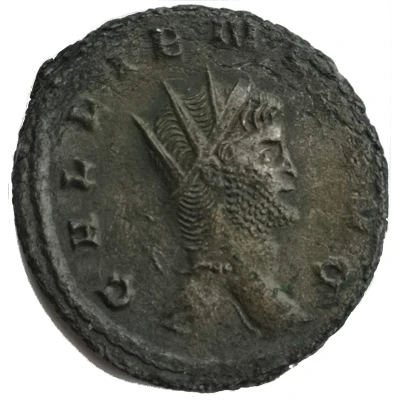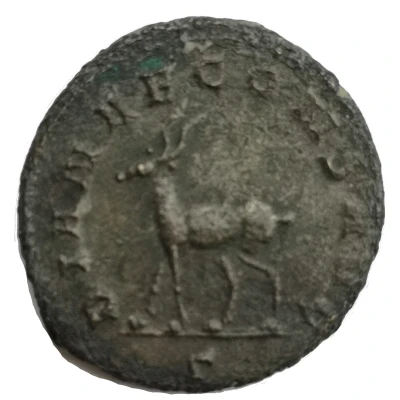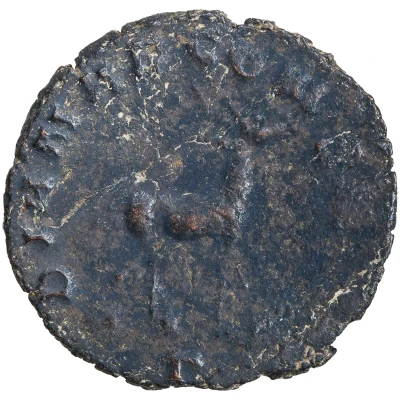


© kerleguern
Antoninianus - Gallienus DIANAE CONS AVG; Antelope
| Silver | 3.47 g | 19.5 mm |
| Issuer | Rome › Roman Empire (27 BC - 395 AD) |
|---|---|
| Emperor | Gallienus (Publius Licinius Egnatius Gallienus) (253-268) |
| Type | Standard circulation coin |
| Years | 260-268 |
| Value | Antoninianus (1) |
| Currency | Antoninianus, Reform of Caracalla (AD 215 – 301) |
| Composition | Silver |
| Weight | 3.47 g |
| Diameter | 19.5 mm |
| Shape | Round (irregular) |
| Technique | Hammered |
| Orientation | Coin alignment ↑↓ |
| Demonetized | Yes |
| Updated | 2024-10-05 |
| Numista | N#43313 |
|---|---|
| Rarity index | 54% |
Reverse
Antelope walking left or right.
Script: Latin
Lettering: DIANAE CONS AVG
Translation: Dianae Cons (-ervatori) Aug (-usti): "Diana, Protector of the August".
Edge
Plain
Comment
While Stag varieties of the coin exist with Stag sometimes looking backward, such Antelope varieties looking backward do not seem to exist.RCV #10200 and RIC #181 do not differentiate Antelope orientation nor obverse bust orientation. Also, RIC #181 includes Bust A variety that Cohen does not seem to list. Cohen differentiates other varieties as follows:
- #162: Head K, Antelope right.
- #165: Head K, Antelope left.
- #166: Bust F var, Antelope left.
- #167: Bust F, Antelope left.
Interesting fact
The Antoninianus coin , which features an image of an antelope on the reverse, was minted during the reign of Emperor Gallienus, who ruled the Roman Empire from 260 to 268 AD. The coin was part of a series of coins minted by Gallienus that featured images of various animals, which were meant to symbolize the emperor's power and authority. The use of an antelope on this coin is particularly interesting because it suggests that the animal was considered a symbol of strength and agility in ancient Roman culture.

